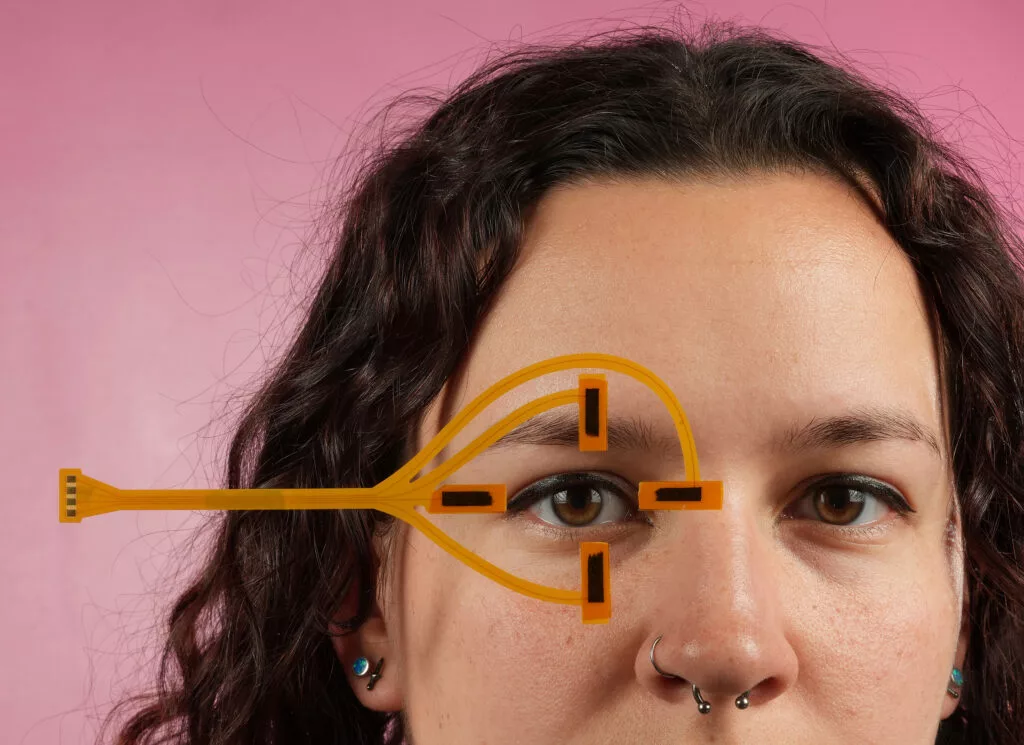The REM (rapid eye movement) stage of sleep plays an important role in learning, memory and brain development. Currently, lab-based tests are required to directly gauge how much REM sleep a person is getting. The SomaSleep mask, however, is claimed to let users do so at home.
In traditional laboratory tests, a technique known as electrooculography is used to determine how much time a patient spends in REM sleep. The process involves adhering pairs of electrodes to the patient's skin, above and below one eye, and to either side of the other eye.
As each eye moves up and down or from side to side, its cornea (front of eye) and retina (rear) correspondingly move closer to or farther away from each electrode. Because the electrical fields of the cornea and retina differ from one another, the electrodes are able to determine which way the eye is facing relative to them, by picking up on changes in the detected electrical signals.
Developed by Seattle-based startup Somalytics, SomaSleep likewise tracks eye movements while its user sleeps, but it does so via integrated capacitive sensors made of a proprietary carbon-nanotube "paper" composite material. A linked group of four of these sensors are located below the foam padding in one of the mask's two eye cups. As the foam is pressed up to the eye when the mask is worn, the sensors detect electrical signals above, below and to either side of that eye.

The eye movement data that the sensors record throughout the night is relayed to a paired smartphone, tablet or compatible fitness-tracking device, which provides the user with an onscreen sleep assessment when they get up. One charge of the mask's battery should be good for at least eight hours of use.
Somalytics is currently looking for development partners, to help bring the device to market. The firm says that SomaSleep should be commercially available by next December, priced at US$199. Prospective buyers can register for updates via the company website.
And as an interesting side note, scientists at the University of Massachusetts Amherst are working on a REM-monitoring wearable of their own, known as the Chesma mask.
Source: Somalytics





